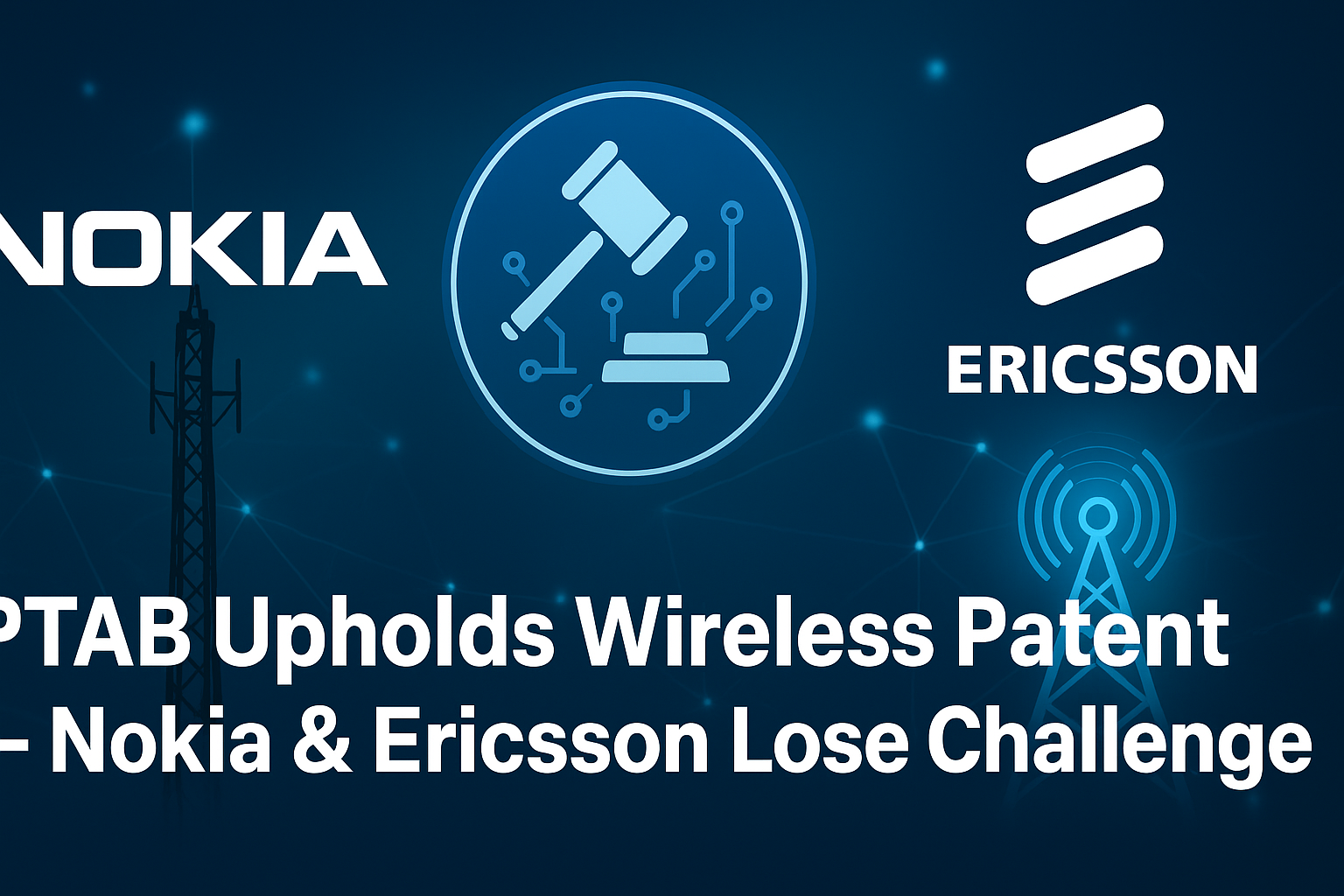The U.S. Patent Trial and Appeal Board (PTAB) has ruled against Nokia and Ericsson in their bid to invalidate a wireless communication patent. The decision preserves 15 key claims from U.S. Patent No. 10,715,235, which focuses on improving data transmission and reducing interference in modern wireless systems.
The ruling marks a significant win for the patent owner, reinforcing the validity of technology used in advanced communication networks.
Patent Focus: Beamforming and Signal Optimization
The patent centers on beamforming and signal management techniques that enhance communication between multiple antennas. It aims to minimize interference, strengthen data transfer, and improve overall network efficiency—core elements in 5G and future wireless infrastructure.
The PTAB concluded that Nokia and Ericsson did not present sufficient evidence to prove the patent claims were unpatentable. The Board found that the prior art references and expert testimony failed to demonstrate clear overlap with the patented invention.
PTAB Rejects Invalidity Arguments
Both telecom companies had argued that the patent’s claims were invalid due to anticipation and obviousness. However, the Board determined that the patent represented a distinct technical advancement in wireless signal processing.
This decision reflects the PTAB’s increasingly rigorous approach to inter partes review (IPR) petitions, particularly in cases involving next-generation communication technologies.
Legal and Industry Implications
The outcome limits Nokia and Ericsson’s ability to use similar invalidity arguments in any future litigation under AIA estoppel provisions. It also strengthens the patent holder’s position in ongoing and future licensing discussions, potentially increasing royalty demands.
Industry experts suggest that the ruling reinforces the importance of robust patent strategies as 5G innovation continues to expand globally. The case highlights how high-value patents in wireless communication remain key competitive assets in the telecom sector.
Broader Context: PTAB’s Changing Dynamics
The PTAB has shown a trend toward upholding more patents amid a rise in challenges from major technology firms. Recent patterns suggest a stricter review process, with the Board emphasizing the need for strong technical and evidentiary support in IPR filings.
This shift may encourage companies to pursue collaborative licensing or design-around strategies rather than relying solely on invalidity petitions to weaken competitors’ portfolios.
What’s Next for Nokia and Ericsson
Both firms are expected to evaluate their legal options, including a potential appeal before the U.S. Court of Appeals for the Federal Circuit. However, appellate courts typically give deference to the PTAB’s technical findings, making reversals rare.
The decision is likely to influence future patent challenges involving wireless infrastructure, signal processing, and 5G deployment technologies, where innovation and patent rights remain critical to market leadership.


